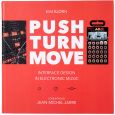
Literature, Sheet Music and more
In order to lay music down in writing several notation systems have been developed over the course of history. The ones commonly used in western music are the musical notation and the tablature.
The modern musical notation that uses a five-line staff and is sectioned into bars, is a further development of ancient notation systems. Each line and the spaces in between represent a certain tone and are systematically determined by clefs. Instruments used for popular music are mostly noted in G (treble)-clef or F (bass)-clef and in case of the piano a combination of both. Furthermore the key is determined by the key signature which is displayed as a simple fraction (e.g. 4/4). With this information it is possible for a musician to play music - just like the composer intended it to sound - he has never actually heard before. The five-line staff notation can also be used as straight rhythmical notation as it is for example for drums or percussion.
The tablature, from a historical perspective, is much older than the musical notation. Today it is mostly used to transcribe music for guitar and bass. This system is much simpler than musical notation but lacks the extensive informational content of the latter. The lines of a tablature represent the strings of the guitar and the finger position on the fretboard is displayed as a number. Rhythmical playing directions can be cited above the lines. Tablature is a compact system that allows for documenting and sharing song ideas quickly and is often provided as an addition to musical notation – especially in sheet music for guitar and bass.

















